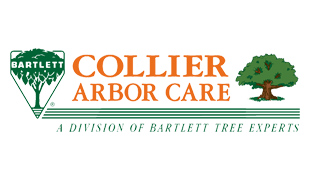|
Current Issue - Spring/Summer 2013 Show Back Issues |
| ||
Now is the Time to Review Your Pruning Needs Certified Arborist, John Dale prunes a photinia hedge.
Certified Arborist, John Dale prunes a photinia hedge.
Spring is a great time to prepare your landscape for outdoor summer activities by removing hanging and dead limbs from you shade trees. Beautify your ornamental trees and shrubs by pruning to improve their form, function and health. Now is the time to schedule pruning to:
Think About Soil Health CareTo keep all trees, shrubs, plants and lawns healthy, the best place to start is from the ground up! By starting with improving the environment in which your plants live, you will enjoy healthier plants in your landscape. Call to arrange an appointment to discuss our new Soil Health Programs. The Acorn Woodpecker(Special thanks to client Dr. Rick Mishaga, wildlife ecologist, for writing this article) The Acorn Woodpecker
The Acorn Woodpecker
If you have been exploring in an Oregon white oak woodland you may have encountered this noisy native woodpecker. The Acorn woodpecker is nine-inches long, with a black head, back, wings and tail, white forehead, throat, belly and rump. The eyes are white. The adult male has a red cap starting at the forehead. The white neck, throat and forehead patches are distinctive identifiers. In fact Woody Woodpecker was said to be based on an acorn woodpecker. This non-migratory species is distributed in western North America
where large oaks are present. In Oregon, the acorn woodpecker is associated
with oak savannahs or mixed oak woodlands and, in the Portland area,
the species is near its northern distribution limit. It also occurs in
California, Arizona, New Mexico, Mexico and is through scattered parts
of Central and northern South America. While most woodpeckers tend to be monogamous, Acorn woodpeckers are
unique for its communal living and its habit of storing acorns. In this
species, breeding and non-breeding birds live together in groups that
use one nest cavity and defend one territory that includes acorn storage
areas called granaries. The acorn woodpecker’s diet varies throughout the year. In the
spring and early summer, the acorn woodpecker drills trees and feeds
on sap and insects. It captures insects by fly catching, i.e., flying
out from a perch and grabbing any insects that happen to be flying by.
By midsummer green acorns replace sap and insects as the dietary staple.
In early fall, the woodpeckers will store ripening acorns in small holes
that they have excavated in oak or other tree trunks. During the winter,
these stored acorns serve are their primary food source. The distribution and abundance of acorn woodpeckers is limited by the abundance of large oaks for nesting and roosting cavities and by oak savannah communities for critical food resources. In northern Oregon where there is only one species of large native oak, the Oregon white oak (Quercus garryana), the acorn woodpeckers survival is subject to the vagaries of weather that can influence acorn crop production and to the loss of oak savannah habitat through land clearing, urbanization, and the invasion of Douglas-fir.
|

(From Top) Apple Rust, Incense Cedar Rust Slime, Cedar Rust, Crabapple Rust 
(Top) Long needles in bundles of three (Below) Willamette Valley Ponderosa Pine orange/red bark has large scaly plates 

Be on the Lookout for Rust DiseasesPlants affectedRusts are fungal diseases that infect many hosts, including birch, cottonwood, cypress, false cypress, fuchsia, hawthorn, juniper, pine, poplar, rhododendron, rose, and spruce. Common rusts in our area include; Incense cedar-pear (and crabapple) rust, Western gall rust, rose rust, hollyhock rust. Symptoms/DamageDry reddish, yellowish, or orange spore masses or pustules form on infected tissue, especially on the lower surface of leaves. The upper surface of heavily infested leaves turns yellow or brown and infected leaves may drop prematurely. Orange, gelatinous masses appear on some infected evergreen hosts. Some species cause tissue swellings or galls, colorful spots on plants, or cankers on bark. These can cause branch dieback and occasionally kill the entire plant. Some rusts may cause leaves and shoots to become distorted, dwarfed, and discolored, forming a “witches broom”. Life CycleRusts have complicated life cycles. In trees they generally go from a coniferous host to an alternate host in the rose family to complete their life cycle. Spores are produced each spring, are windborne and infect other alternate hosts. Moist conditions stimulate spore release and favor infection. There are as many as 5 different spore types typical rust can produce. Western gall rust is an exception and only infects pines and has no alternate host. ManagementCultural: Rusts have complicated life cycles. In trees they generally go from a coniferous host to an alternate host in the rose family to complete their life cycle. Spores are produced each spring, are windborne and infect other alternate hosts. Moist conditions stimulate spore release and favor infection. There are as many as 5 different spore types typical rust can produce. Western gall rust is an exception and only infects pines and has no alternate host. Treatment: Fungicides applied in the spring can reduce some rust diseases, but frequent applications required to provide good control are generally not warranted in landscapes. To control white pine blister rust, nearby alternate hosts (Ribes spp.) are sometimes removed, but the effectiveness of this is questionable. Featured Tree: Willamette Valley Ponderosa PineMost people in the Willamette valley think Ponderosa (yellow) pine (Pinus ponderosa) grows east of the cascades. They are unaware that ponderosa pine was once found in abundance throughout the Valley. David Douglas the famous botanical explorer in the early 1800’s, commented in his writings on the abundance of pines throughout the region. The frequent ground fires set by early native people resulted in widely spaced groves of “yellow pines” surrounded by grass prairies. Plant Scientists now recognize a genetically distinct western strain of Ponderosa pine that is adapted to the high rain fall in the valley. East side seed sources grow poorly in the valley. Ponderosas grow on a variety of both rural and urban sites throughout the valley. Examples of native groves are found in Beaverton area and around the Nike campus. Commonly Ponderosas are found in association with Oregon white oak in poorly drained soils and near river bottoms. Ponderosa pines are recognized by their long needles in bundles of 3 and egg-shaped cones 3 to 6-inches long. Older trees have orange red bark in large scaly plates that almost glow in sunlight. This important timber tree can also be planted in large groves or park–like settings and used in bonsai. In the wild it can reach heights over 200-feet tall. Concern about the dwindling supply of native Willamette Valley Ponderosas has led to conservation efforts using valley seed sources. Collier Arbor Care has planted several Willamette Valley Ponderosa pines in our stream bank conservation easement. Top 12 Small Native Trees For Western Oregon and WashingtonSee our next issue for the next six on the list! Vine Maple (Acer circinatum)
15 to 25’ tall, 10-20’ spread Western Serviceberry (Amelanchier alnifolia)
10-20’ tall, 10-20’ spread Madrone (Arbutus menziesii) 30-50’ tall, 30-50’ spread 
 Madrone trees have gorgeous reddish orange peeling bark Madrone is the only broadleaf native tree in the NW. It has gorgeous reddish orange peeling bark. Creamy white flowers in spring and red berries appear in the fall. Grows in full sun, rocky poor soil and needs fast drainage, drought tolerant. Pacific Dogwood (Cornus nuttallii)
24 to 40’ tall, 10- 20’ wide Black Hawthorn(Crataegus suksdorfii)
25-45’ tall, 15-25’ spread Quaking Aspen (Populus tremuloides)
20-60’ tall, 15-30’ wide |
|
Home |
Services |
The Arbor Advisor |
Garden Calendar |
About Us |
Fact Sheets |
Contact Us |
Site Map Collier Arbor Care Portland 503-722-7267 Vancouver (360) 693-6056 Site contents and design ©2013 Collier Arbor Care |







 top »
top »